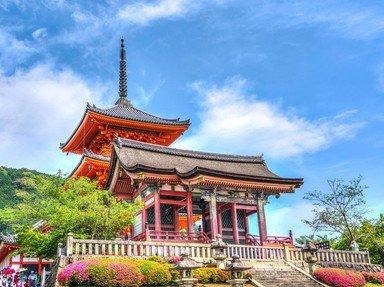Quiz Answer Key and Fun Facts
1. Which gate is the largest gate leading to Beijing's famous Forbidden City?
2. What is the nickname of Beijing's sports arena that is properly called Beijing National Stadium?
3. Tiananmen Square contains the final resting place of which Chinese figure?
4. The Hall of Prayer for Good Harvests is the largest building in which Beijing complex?
5. Which of the following is true regarding the Temple of the Sun (pictured) and the Temple of the Moon?
6. Beijing National Aquatics Center, better known as the Water Cube, hosted the many aquatic sports during the 2008 Summer Olympics. What became of the Water Cube after the Games ended?
7. Pictured to the left, which of the following buildings is NOT one of the Ten Great Buildings that commemorated the 10th anniversary of the People's Republic of China?
8. Kunming Lake and Longevity Hill form the location for what Beijing landmark?
9. True or False: There is no purple bamboo in Beijing's Purple Bamboo Park.
10. There is a bronze statue of engineer Guo Shoujing (who is called the Tycho Brahe of China) at which Beijing landmark where he worked?
Source: Author
Joepetz
This quiz was reviewed by FunTrivia editor
stedman before going online.
Any errors found in FunTrivia content are routinely corrected through our feedback system.
